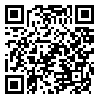Conservatiion with respect to physiological aspects of crops is a crucial factor for ideal photosynthesis and appropriate yield in arid and semi-arid agro-ecosystems. In order to investigate the effect of planting pattern on stability of physiological parameters of fenugreek and black cumin under drought stress, an experiment was conducted in the University of Shahrekord in 2014. Three drought levels, i.e. W1: complete irrigation (irrigation based on 100% of the field capacity), W2: moderate stress (irrigation based on 75% W1), W3: severe stress (irrigation based on 50% W1) were assigned to as main factor and five planting patterns including fenugreek and black cumin sole cropping, and three intercropped ratios (1:2, 1:1, 2:1 fenugreek: black cumin) as sub factor. Results showed that by increasing drought stress, the amount of chlorophyll a and chlorophyll b were increased especially for fenugreek: black cumin intercropped as by as their sole cropping. In fenugreek, the greatest amount of proline was obtained in fenugreek: black cumin (1:1) and sole cropping treatments as high as 10.51 and 11.5 mg/g, respectively, and the lowest amount (9.75 mg/g) was recorded in fenugreek: black cumin (2:1). Moreover, the highest rate of essence was recorded in sole-cropping (12.9 g/kg) and fenugreek: black cumin (1:1) (12.6 g/kg). Although the essence rate of sole cropped plant was higher in back cumin, but intercropped plant had more essence in drought conditions. Also more relative water content and less soluble sugar and essence were seen in intercropping patterns, with increasing drought stress. Generally, it could be concluded that creation of interspecific competition could be an important strategy to protect physiological parameters against drought stress damages.
Received: 2015/08/4 | Accepted: 1901/12/14 | Published: 2017/03/12
| Rights and permissions | |
 | This work is licensed under a Creative Commons Attribution-NonCommercial 4.0 International License. |



